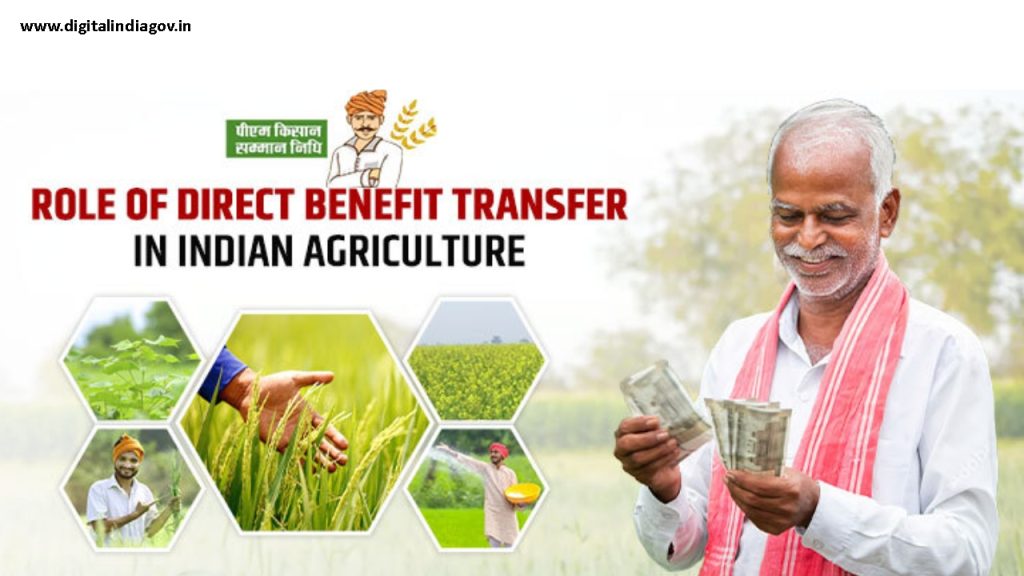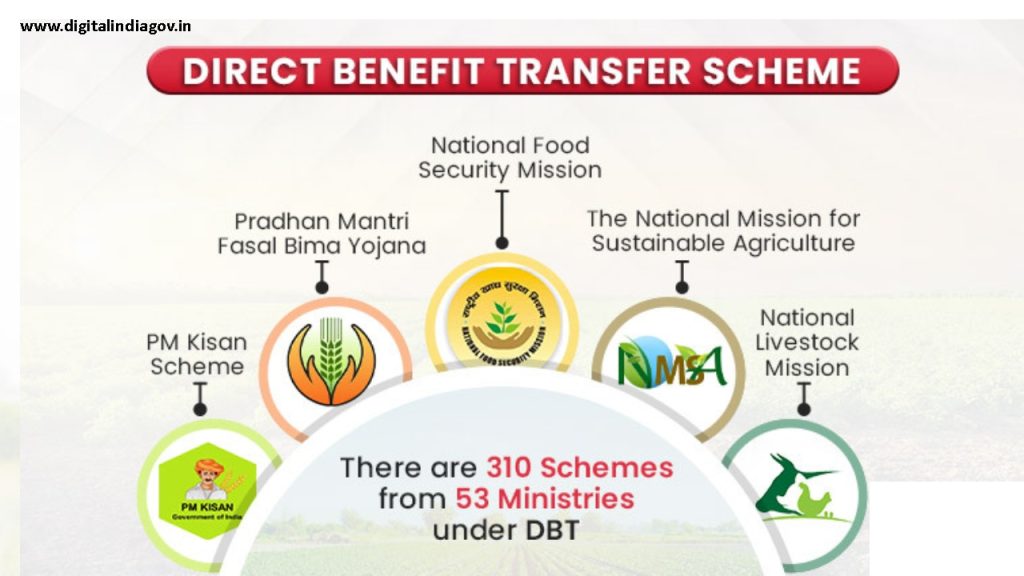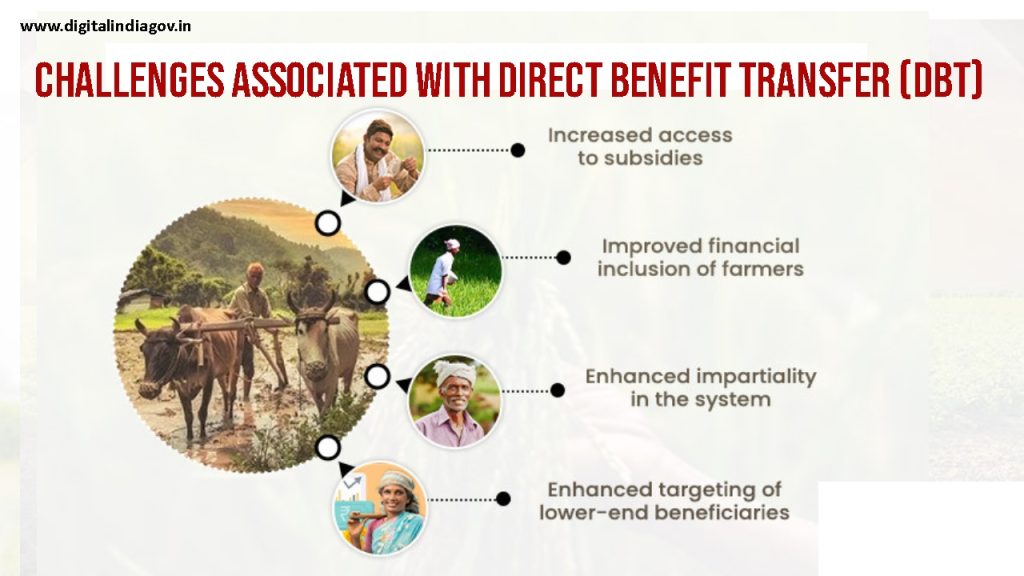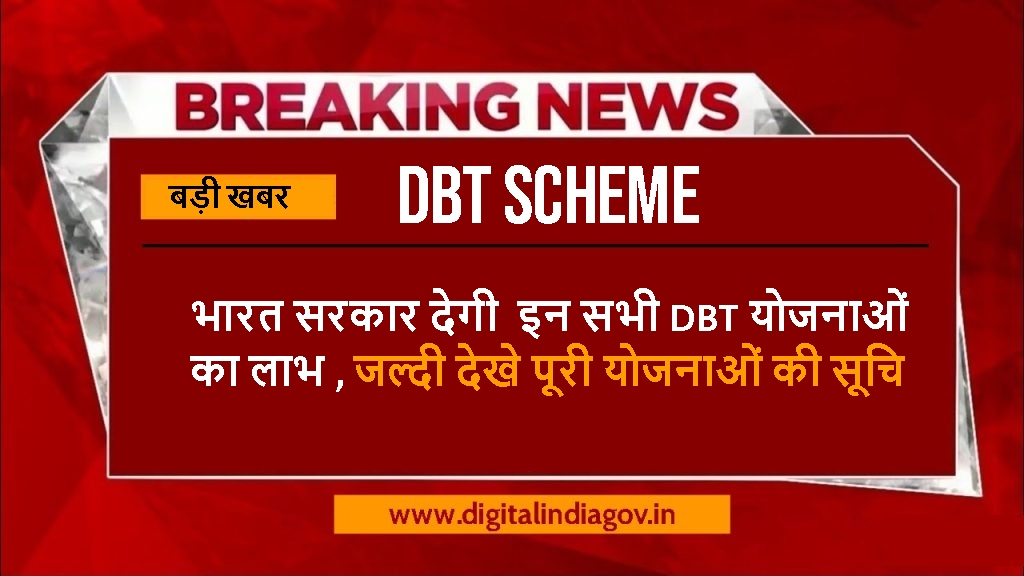DBT Scheme, The government of India revolutionised welfare distribution in 2013 with the introduction of Direct Benefit Transfer (DBT). DBT seeks to directly empower beneficiaries while reducing fraudulent activities by streamlining fund transfers and increasing transparency.
Contents
Direct Benefit Transfer (DBT)
On January 1st, 2013, the Indian government introduced the Direct Benefit Transfer (DBT) program to restructure the government distribution system. It aims to expedite and streamline the delivery of data and payments to beneficiaries while reducing systematic fraud. Direct-to-consumer (DBT) delivery of government subsidies, benefits, and assistance guarantees a more efficient and transparent delivery method.
Components of Direct Benefit Transfer (DBT)
The National Payments Corporation of India (NPCI), the Reserve Bank of India (RBI), and several public and private sector entities are all connected to the Beneficiary Account Validation System, a robust payment and reconciliation platform. It is an essential part of the DBT implementation process. Among the 310 programs offered by 53 ministries under DBT, notable projects include the Pradhan Mantri Fasal Bima Yojana, National Food Security Mission, Pradhan Mantri Krishi Sinchai Yojana, PM KISAN, Swachh Bharat Mission Gramin, Atal Pension Yojana, and National AYUSH Mission.
Also Read: PMGKAY Scheme, shaladarpanportalgov.com, yojanaforall.com, Onlinereferjobs
Direct Benefit Transfer (DBT) Pros and Cons

By improving transparency and expediting financial transfers, Direct Benefit Transfer (DBT) improves the delivery of welfare. Nevertheless, it has drawbacks including transaction fees and technological restrictions.
| Cons of Direct Benefit Transfer (DBT) | Pros of Direct Benefit Transfer (DBT) |
| Transaction expenses: DBT may entail transaction fees, including those associated with digital payment processing and bank account establishment and maintenance. | Decreased leaks: DBT can help cut down on leaks in government aid programs by doing away with the need for middlemen. |
| Technical difficulties: DBT necessitates a strong and dependable electronic payment system. In certain instances, rural areas or marginalised populations might not have access to this infrastructure. | Transparency is increased because DBT transactions are electronically recorded, making it simpler to trace and keep an eye on the money’s movement. |
| Concerns about data security and privacy: DBT includes gathering and storing private information. This information must be shielded from abuse and illegal access. | Better targeting: DBT can be used to more precisely target welfare benefits to the people who are supposed to get them. |
| Last-mile obstacles: In rural locations without access to digital payment infrastructure or banking, DBT can be difficult to deploy. | Enhanced financial inclusion: By promoting the opening of bank accounts and the usage of digital payment methods, DBT can aid in the expansion of financial inclusion. |
Direct Benefit Transfer (DBT) Benefits
There are many advantages to the DBT service extension, such as:
Financial Inclusion
By extending banking and telecom services and facilitating bank account opening for all families, DBT has promoted greater financial inclusion.
Instant Money Transfers
With the creation of the Aadhaar Payment Bridge, the government can now easily and instantaneously transfer funds to residents’ bank accounts, facilitating quick and easy access to financial aid.
Transparency and Efficiency
By means of direct bank account transfers of financial aid and subsidies, DBT has reduced corruption, increased transparency in the distribution system, and ensured that funds reach the intended recipients without the need for intermediaries.
Lower Transaction Costs
By providing them with affordable and transparent financial help for a range of projects, including fertilisers, DBT has directly aided rural farmers.
Social Security and Welfare
In order to ensure that eligible recipients of social security benefits receive them effectively, DBT has been crucial in transferring funding for programs such as the PM Awas Yojana, LPG Pahal, the National Social Assistance Program, and scholarships.
Empowering Marginalized Sections
New social mobility channels have been made possible by DBT. One such pathway is the Self Employment Scheme for Rehabilitation of Manual Scavengers (SRMS), which assists disadvantaged people in obtaining financial aid and improving their socioeconomic status.

Also Read: PMEGP Scheme Details, Mobilenumbertrackeronline, indnewsupdates.com, ssorajasthanidlogin.com
Direct Benefit Transfer (DBT) in Agriculture
By expediting the allocation of grants, subsidies, and other aid, DBT aims to ensure that the benefits efficiently reach the targeted agricultural sector recipients. DBT in agriculture encourages accountability, transparency, and focused resource allocation by removing middlemen and minimising leaks. It enables farmers to get financial aid for various purposes, such as the acquisition of seeds, fertiliser, irrigation, equipment, and other agricultural inputs, in order to boost agricultural productivity and maintain their standard of living. Through direct bank account financial support, subsidies, and incentives, DBT assists Indian farmers in adopting novel farming practices, lowering risks, and increasing overall output. Here are some examples:
Pradhan Mantri Fasal Bima Yojana (PMFBY)
With this scheme, farmers receive premium subsidies and claim payments straight into their bank accounts, protecting them against agricultural losses brought on by pests, illnesses, or natural catastrophes.
Soil Health Card Scheme
DBT provides financial assistance to farmers so they can obtain soil health cards, which provide detailed information on the nutrients in their soil. This improves soil fertility management and enables them to make well-informed judgements on fertilisers.
Pradhan Mantri Krishi Sinchayee Yojana (PMKSY)
DBT is used in PMKSY to give farmers financial support for installing water-saving irrigation techniques, like micro-irrigation equipment. Incentives and subsidies are transferred straight into their bank accounts to encourage agricultural water efficiency.
National Food Security Mission (NFSM)
In order to improve agricultural productivity, expand the nation’s supply of essential food crops, and promote the production and distribution of high-quality seeds, farmers under NFSM receive direct financial aid through DBT.
Paramparagat Krishi Vikas Yojana (PKVY)
Through the use of DBT, PKVY provides farmers who use organic farming practices with financial support. The money is transferred straight into their bank accounts, encouraging organic farming methods and lowering reliance on chemical inputs.
Challenges Associated with Direct Benefit Transfer (DBT)
There are a number of obstacles to DBT implementation, including:
Limited Accessibility
Lack of accessibility or closeness to enrolment centres frequently makes it difficult for citizens to enlist. The difficulty is increased when officials or operators in charge of enrolment are unavailable or inconsistently available.
Shortage of Facilities
Many rural and tribal populations struggle to access DBT services because of inadequate road connectivity and banking infrastructure. To increase public awareness, there is also a need for improved financial literacy.
Uncertainties and Documentation Issues
Difficulties in obtaining the necessary documentation and problems or inaccuracies in the documentation itself are among the unknowns and delays in the application process.
Also Read: C Scheme Cafe, digitizeindiagovin.com, Typingspeedtestonline, Nebsit Council
Disruptions in Payment
Beneficiaries who experience difficulties getting money into their bank accounts through DBT may experience disruptions in the payment schedule. These disruptions could be brought on by outstanding KYC, cancelled or inactive bank accounts, spelling mistakes in Aadhaar data, or discrepancies between Aadhaar and bank account data.
Exclusion of Beneficiaries
Some DBT programs, such as Pradhan Mantri Kisan Samman Nidhi (PM-Kisan), Rythu Bandhu in Telangana, and YSR Rythu Bharosa in Andhra Pradesh, forbid tenant farmers from growing on leased land.

FAQ’s
Q. What is UPSC’s Direct Benefit Transfer?
Ans: The Direct Benefit Transfer (DBT) system was introduced by the Indian government to guarantee the effectiveness and transparency of welfare programs. It enables qualifying recipients to receive payments and subsidies directly into their bank accounts.
Q. What are the DBT enablers?
Ans: DBT ensures precise identification, seamless money transfers, and effective beneficiary communication by utilising technologies like as Jan Dhan bank accounts, Aadhaar identity, and mobile connectivity.
Q. Direct Benefit Transfer (DBT): What is it?
Ans: In 2013, the Indian government started the Direct Benefit Transfer (DBT) program with the goal of transforming aid distribution. It increases the efficiency of fund distribution and reduces fraud by facilitating direct subsidies, perks, and support for intended users.
@PAY
